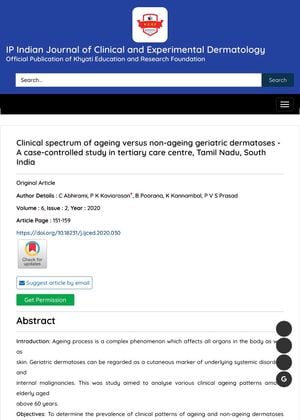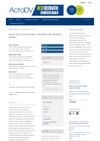Clinical Spectrum of Aging Versus Non-Aging Geriatric Dermatoses: A Case-Controlled Study in a Tertiary Care Center, Tamil Nadu, South India
June 2020
in “
IP Indian journal of clinical and experimental dermatology
”

TLDR Older people more commonly have skin conditions related to aging, and early treatment can improve their quality of life.
In 2020, a study was conducted on 300 patients aged 60 and above to analyze the prevalence of clinical patterns of ageing and non-ageing dermatoses. The study found that primary ageing dermatoses were more prevalent than non-ageing dermatoses (95.3% vs 39%). The most common patterns of geriatric dermatoses were wrinkling (95.3%), xerosis (54.7%), seborrheic keratosis (31.3%), and Leucoplakia (16%). The study concluded that geriatric dermatoses become more prevalent due to environmental and occupational hazards as the skin of the elderly is nutritionally, immunologically, and psychologically compromised. Primary ageing and pathological disorders were higher among the pre-existing dermatoses group than other systemic disorders group. Early recognition of patterns and appropriate management were suggested to improve the quality of life in the elderly.
